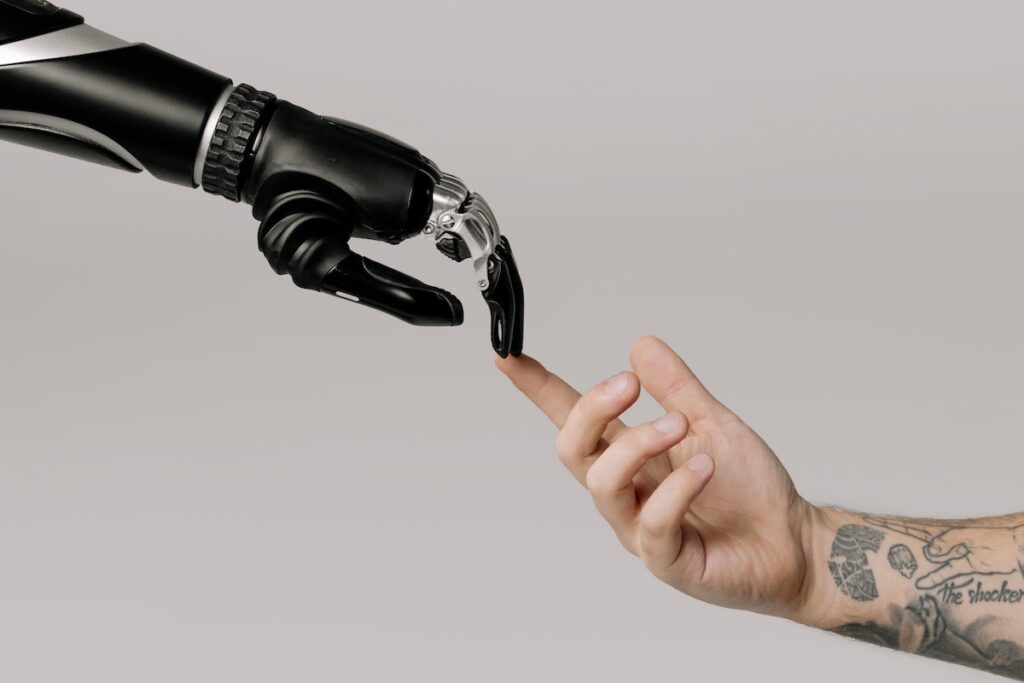With the evolution of computer technologies, AI has taken the central stage. It is changing rapidly and impacting each and every sector of our daily lives. The AI has changed the way we work. Similarly, now, the desktop usage of AI has been reduced, and the emerging trend is mobile chatbots and digital assistants. These technologies do not require a complete desktop system to operate. Instead, they can be accessed via mobile phones and devices of their own.
As a result, AI has become smarter and more easily accessible than ever before. No, you can get help from AI anywhere and anytime around your home, on the road, in offices, and on the go. The terms chatbot and digital often seem interchangeable, but these AI-driven solutions have distinct purposes. Let’s find out all those basic differences and make boundaries between them so that we can differentiate them easily when they appear next time before us.
Learn about the key differences between chatbots and mobile applications here. Find out how they differ from each other in functionalities, features, use cases, and purposes.
Purpose and Functionality
Chatbots have specific purposes in customer service. They can answer questions. They help users with processes. This focus makes them efficient. Users interact with chatbots through text. Many chatbots show up on websites or messaging apps. They provide fast replies to common issues. Businesses use chatbots to improve customer satisfaction.
Chatbots have some limits, but digital assistants can do more things. Digital assistants can perform many tasks. They can set reminders. They can play music. They can control smart home devices. These tasks make them versatile. Users can talk to digital assistants using voice or text. This lets users choose how they want to talk.
Technology
- Natural Language Processing: Chatbots use natural language processing or NLP. This helps them understand the text from users. There are two types of chatbots. Rule-based chatbots follow simple scripts. They do not learn from past interactions. AI-based chatbots can learn. They get better over time with more data.
- Machine Learning: Digital assistants use machine learning or ML. Machine learning helps them adapt and improve. Voice recognition technology is also important. It lets users say their commands. Digital assistants understand different accents and dialects. This makes them easy for many people to use.
Contextual understanding is important, too. Digital assistants remember what users said before. This memory helps them give better answers. For example, if a user asks about the weather, the assistant remembers where they are. This feature is important for personalizing answers.
Chatbots focus on simple tasks, but digital assistants can do more. They fit into users’ lives in many ways. The future of these technologies looks exciting. Users will see more advanced abilities and smarter interactions.
User Engagement
Many businesses use chatbots for support. Chatbots provide quick answers to questions. Users interact with chatbots through text. This is simple and fast. A customer may ask about product availability. The chatbot can respond with the details quickly. This transforms communication and saves time for the user and the business. However, chatbots have limitations in conversations. Chatbots often stick to specific topics. They cannot talk about complex subjects. Users may feel frustrated when they need detailed help. A chatbot can misunderstand nuanced questions. This can cause repeated queries and dissatisfaction.
Digital assistants with emotions create a personal experience for users. They adapt to individual needs over time. They remember user preferences. This means they give relevant information quickly. Digital assistants can manage tasks and understand voice commands. They set reminders, play music, or tell the weather. This versatility makes them valuable in everyday life. Users enjoy a smooth interaction experience. The more you use a digital assistant, the more it learns about you. This relationship can create dependency on technology for tasks.
Examples of Popular Chatbots and Digital Assistants
- Popular Chatbots: Zendesk and Drift are popular chatbots for service. They help businesses talk effectively with users. These bots handle inquiries without humans. They save companies money and increase efficiency. Facebook Messenger bots are other examples. They engage users on social media. They provide news updates, event notifications, and more. Their integration into apps makes them easy to use.
- Popular Digital Assistants: Jenai Chat and Apple Siri are leaders in the market. These innovative digital assistants connect with smart devices at home. You can control lights or thermostats with simple voice commands. Google Assistant is strong in the mobile market. It helps users to navigate their schedules. It also answers questions quickly. All digital assistants give convenience and support. They help in everyday activities. Their capabilities grow over time. People will likely rely on them more.

Use Cases
Chatbots are used widely to automate tasks. They streamline customer interactions. They provide instant support across many industries.
- E-commerce support: Businesses use chatbots for marketing in many ways. E-commerce support is a common use. Customers can ask questions about products. Chatbots help buyers quickly. They can answer common questions. This makes shopping easy for everyone. Many online stores have chatbots. They give instant help. They reduce waiting times for customers. These bots improve user experience greatly.
- Frequently Asked Questions: Chatbots also help with FAQs. They help with retrieving information. Users often search for specific information. Chatbots can pull this information fast. They save customers time and effort. Instead of looking through long web pages, users can ask. This feature increases user engagement. It also leads to higher customer satisfaction.
Digital assistants manage tasks. They control smart devices. They offer personal virtual assistance through voice or text in daily activities.
- Home automation: Digital assistants fulfill important roles. Home automation is a popular use. People can control smart devices with their voices. This makes daily tasks simple and fast. Imagine turning off lights or changing a thermostat by talking. Many users find this convenience valuable.
- Personal productivity tools: Personal productivity tools make digital assistants better. They can create calendar events. They can also set reminders. This helps users to manage time effectively. Users can ask about their schedules. This makes a simple task into an easy conversation. People depend on this technology to stay organized.
Are you looking for free digital assistants that provide you with free credit? Check out the list to pick the best one to install on your mobile phone.
Future Trends
Future trends promise exciting changes in technologies. Chatbots for mobile devices will have better conversation skills. They will understand users more and respond better. Users will expect more natural interactions later.
Cross-platform integration will also become standard. Chatbots will work well on different platforms. This will create a smooth experience for users.
Digital assistants will see important advances, too. More personalization will change how users interact. These assistants will learn what each person likes and does.
Better connection with IoT devices will be normal. Users will expect digital assistants to control more devices. This will make everyday life easier. The future seems bright for chatbots and digital assistants. They will change how people use technology every day. Now, you can make a free digital assistant. Learn how to make a digital assistant on your own using ChatGPT here!
Conclusion
Chatbots and digital assistants are different in many ways. Chatbots focus on specific tasks. They are good at customer service and often answer simple questions. Users find chatbots on websites and social media. They help businesses respond fast to usual problems. However, chatbots have limits. They cannot manage difficult tasks or have deep conversations. Their main goal is to improve customer experience without much personalization.
Digital assistants, on the other hand, have a wide range of functions. They can manage schedules and control home devices. Users talk to them using voice commands or text. This flexibility makes them easy for many people to use. Digital assistants can learn from what users do. They remember preferences and change responses. This personalization makes the overall user experience better.
The technology behind these tools shows why they are different. Chatbots use natural language processing or NLP. They can understand text inputs, but they do not learn well from them. Some chatbots are rule-based. They follow strict scripts and cannot change them. Other chatbots use AI. They adapt over time. Their range still remains limited.
Digital assistants like Jenai Chat rely on advanced technology. They use machine learning and voice recognition. They understand the context. They deliver personalized experiences. This ability to learn and remember makes them powerful. Digital assistants become smarter with each interaction. They support daily activities. They enhance productivity and convenience.
It is important to understand these differences. Chatbots play a key role in customer service. They help companies manage inquiries. They improve satisfaction. Digital assistants change how people interact with technology. They integrate into many aspects of life. They make tasks easier. Technology advances all the time. Both tools will continue to evolve. Their roles become more significant. How do these advancements shape the future of work and communication?
